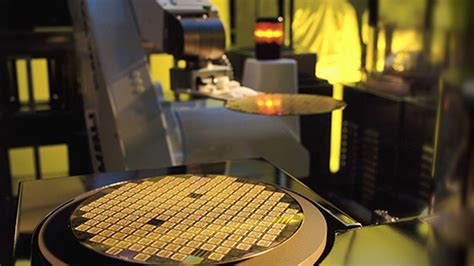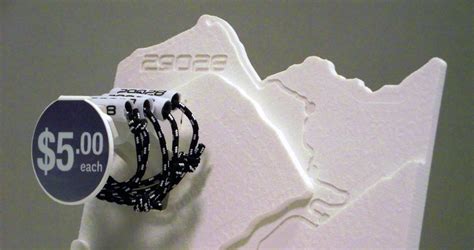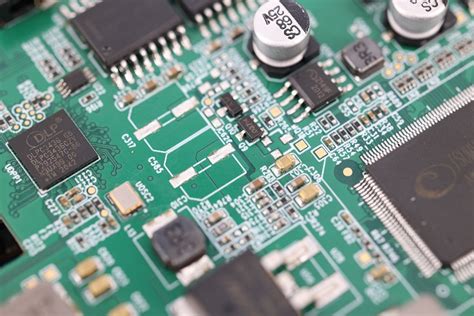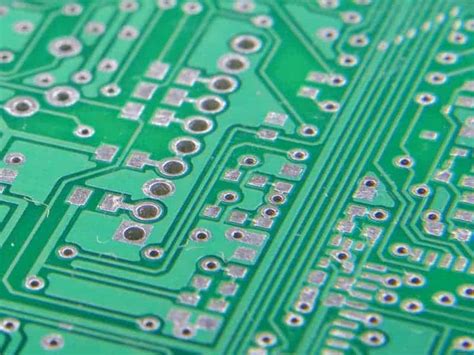Unlocking Innovation in Circuit Manufacturing: The Future Ahead
Key Takeaways
In the fast-evolving realm of circuit manufacturing, it is vital for you to grasp the impact of emerging technologies, particularly in pcb manufacturing. The integration of advanced materials and automated solutions has begun to redefine what is achievable in this sector. You should note the significant trends shaping the future, including increased demand for miniaturization and higher efficiency in production processes. Additionally, pcb manufacturing companies are increasingly adopting innovative methods that focus on sustainability, which is not just ethically imperative but can also lead to reduced pcb manufacturing costs. To remain competitive, your pcb manufacturing business must leverage these innovations while aligning with market dynamics that favor adaptability and responsiveness. Understanding these factors will empower you to navigate future opportunities and challenges effectively in this dynamic industry, enhancing overall efficiency and sustainability.
The Impact of Emerging Technologies on Circuit Manufacturing
The impact of emerging technologies on pcb manufacturing is profound and multifaceted. Innovations such as 3D printing, IoT integration, and advanced materials science are transforming how manufacturers approach design and production. As you explore the landscape of pcb manufacturing companies, you’ll notice a significant shift toward automation and precision that reduces the overall pcb manufacturing cost while enhancing product quality. Embracing these advancements allows you to streamline operations, improve accuracy, and ultimately foster a more innovative business model within the pcb manufacturing business sector. For instance, the adoption of robotics in assembly lines not only speeds up production but also minimizes human error, which is essential in producing high-quality circuits. Furthermore, as you evaluate these technologies, consider how they can facilitate sustainable practices; for instance, smarter waste management systems integrated within production processes can significantly reduce environmental impact while optimizing resource usage. This integration of technology has positioned the industry on the brink of unprecedented growth and adaptability to future challenges.
Trends Shaping the Future of Circuit Manufacturing
In the fast-evolving world of pcb manufacturing, numerous trends are emerging that are set to redefine the landscape. One significant trend is the increasing push towards automation. Many pcb manufacturing companies are integrating advanced technologies such as robotics and artificial intelligence to streamline production processes, increase efficiency, and minimize human error. This shift not only lowers pcb manufacturing costs, but it also enhances consistency in production quality.
Another crucial aspect is the rising demand for smaller, more complex electronic devices. As technology progresses, the trend towards miniaturization demands innovative solutions in circuit manufacturing. Companies are investing in advanced materials and techniques to produce high-density interconnect (HDI) circuits that facilitate this trend, enabling more functionality within limited space.
Sustainability is also gaining traction within the industry. As environmental concerns rise, there is a growing emphasis on adopting eco-friendly materials and practices in pcb manufacturing processes. Not just a regulatory requirement anymore, these practices can also lead to cost savings in the long term as companies embrace energy-efficient technologies.
Moreover, staying ahead of market dynamics is key for pcb manufacturing businesses. Understanding customer needs and global market shifts can help tailor offerings effectively to capture emerging opportunities.
“Adapting to these trends not only keeps you competitive but also positions your business for future growth.”
By embracing innovations and recognizing these pivotal trends, you can ensure your venture is well-prepared for the changing tides of the circuit manufacturing industry. Keeping an eye on these developments will help you make informed decisions that can lead to greater success in your pcb manufacturing business endeavors.
| Trend | Description | Impact on Industry |
|---|---|---|
| Automation | Integration of robotics and AI | Increased efficiency |
| Miniaturization | Production of smaller circuits | Higher complexity |
| Sustainability | Eco-friendly materials & practices | Cost savings |
| Market Dynamics | Adapting to consumer needs | Tailored offerings |
In summary, understanding and adapting to these trends holds immense potential for future advancements in circuit manufacturing while aligning with sustainability goals and customer expectations.
Innovations in Sustainable Practices for Circuit Production
In today’s rapidly evolving landscape of pcb manufacturing, you have a unique opportunity to leverage innovative practices that prioritize sustainability. The incorporation of green technologies and eco-friendly materials not only reduces environmental impact but can also drive down pcb manufacturing costs in the long run. By collaborating with forward-thinking pcb manufacturing companies, you can implement methods such as waste reduction and energy-efficient processes that enhance your production’s overall sustainability profile. Moreover, adopting circular economy principles can open new avenues of efficiency and cost savings, allowing your pcb manufacturing business to stand out in a competitive market. You might explore the potential of biodegradable substrates or advanced recycling techniques as part of your strategy to innovate sustainably. These practices not only appeal to environmentally conscious consumers but also strengthen your brand’s reputation, ensuring you remain at the forefront of industry trends. In essence, integrating sustainable innovations into your circuit production processes is not just beneficial for the planet but also a pragmatic approach to securing a successful and resilient future in the pcb manufacturing sector.
Strategies for Enhancing Efficiency in Circuit Manufacturing
In the fast-paced realm of pcb manufacturing, enhancing efficiency is paramount for staying competitive. To achieve this, pcb manufacturing companies are increasingly adopting advanced technologies and innovative practices. One effective strategy involves the integration of automation within production processes. Implementing automated systems not only streamlines operations but also significantly reduces labor costs, contributing to lower overall pcb manufacturing cost. Moreover, investing in high-quality materials and precision tools can lead to reduced waste and improved yield rates, which are critical in the pcb manufacturing business. It is also vital to foster a culture of continuous improvement among your workforce; encouraging team members to suggest process optimizations can unveil hidden efficiencies that benefit the entire organization. Lastly, leveraging data analytics can provide insights into production bottlenecks, enabling you to make informed decisions that enhance productivity and maintain quality standards. By focusing on these strategies, you set a strong foundation for sustained success in an evolving industry landscape.
Understanding Market Dynamics in Circuit Manufacturing
In the realm of pcb manufacturing, understanding market dynamics is crucial for both suppliers and customers. As you engage with various pcb manufacturing companies, it’s essential to grasp the factors influencing the pcb manufacturing cost and how they correlate with market trends. The increasing demand for high-quality, reliable circuit boards is driving these companies to adopt innovative practices. You may notice a shift towards more sustainable and efficient manufacturing processes, which not only reduce waste but can also lead to cost savings. This evolving landscape challenges businesses to stay agile, adapting their strategies in response to fluctuating market demands while also leveraging advancements in technology. The interplay between global supply chains and local production capabilities impacts your choices in the pcb manufacturing business space, making it imperative for you to remain informed about emerging trends and economic conditions that shape this dynamic industry.
The Role of AI and Automation in Circuit Manufacturing
In the realm of circuit manufacturing, the integration of AI and automation is proving to be a game-changer. These technologies not only enhance precision but also significantly reduce the pcb manufacturing cost associated with traditional production methods. As you delve into the strategies adopted by leading pcb manufacturing companies, you will notice an increased reliance on intelligent systems that streamline processes, from design to assembly. By employing advanced algorithms, these systems can predict failures before they occur, thereby minimizing downtime and ensuring a smoother workflow. In your exploration of the pcb manufacturing business, consider how automation facilitates scalability and adaptability, empowering companies to quickly respond to market demands and shifts in consumer preferences. Moreover, as you analyze the overall landscape, keep an eye on how these advancements are fostering sustainable practices that align with global efforts toward resource efficiency—perhaps a vital element for future success in this dynamic industry. Emphasizing these aspects will provide you with a comprehensive understanding of how AI and automation are not merely trends but essential components driving the future of circuit manufacturing forward.
Future Opportunities and Challenges in the Circuit Industry
As you navigate the complexities of the pcb manufacturing landscape, you will encounter both remarkable opportunities and significant challenges. With an increasing demand for advanced electronics, pcb manufacturing companies are poised to innovate, driven by enhancements in technology and automation. Yet, while the pcb manufacturing cost is a pivotal factor influencing business strategies, many companies are adopting practices that not only reduce costs but also promote sustainability. Explore how emerging technologies can streamline production processes and reduce waste, allowing you to stay competitive in a crowded market. However, with innovation comes the need to address potential challenges such as supply chain disruptions and regulatory compliance. It’s vital to maintain agility and adaptability as market demands shift. By focusing on these elements, your pcb manufacturing business can thrive amidst evolving market conditions while contributing positively to the industry’s future sustainability goals.
Conclusion
As you navigate the intricacies of circuit manufacturing, it’s essential to keep an eye on the myriad of factors shaping the industry. The rise of innovative technologies has significantly influenced pcb manufacturing, streamlining processes while lowering the pcb manufacturing cost. By staying informed about advances in automation and artificial intelligence, you can gain a competitive edge over other pcb manufacturing companies. Moreover, as sustainable practices continue to gain momentum, your pcb manufacturing business can benefit from adopting eco-friendly approaches that attract environmentally conscious clients. Embracing these changes not only enhances efficiency but also positions you well for future opportunities in this dynamic sector. The convergence of technology and sustainability opens the door for exciting developments, ensuring that your strategies remain relevant and impactful in an ever-evolving landscape.
FAQs
What is PCB manufacturing?
PCB manufacturing, or Printed Circuit Board manufacturing, refers to the process of producing circuit boards that are essential for most electronic devices. These boards act as the backbone for electronic connections and functionalities.
How do I identify reputable PCB manufacturing companies?
When selecting pcb manufacturing companies, consider their experience, client reviews, quality certifications, and technology capabilities. A well-established company will often provide transparent information about their processes and standards.
What factors influence PCB manufacturing cost?
The pcb manufacturing cost can vary based on several factors including materials used, the complexity of the design, volume of production, and lead times. Custom features may also add to the overall costs.
What is the typical timeline for a PCB manufacturing business?
The timeline for a pcb manufacturing business can depend on multiple aspects such as order size, customization level, and current production capacity. Generally, prototype orders may take a few days to weeks; whereas larger batches may require more time.
How can I ensure my PCB design is optimized for manufacturing?
To optimize your PCB design for manufacturing, ensure that it meets standard design guidelines. Use appropriate software that facilitates checks for manufacturability and collaborate closely with your chosen manufacturer.
For further insights into the evolving landscape of circuit manufacturing, including market trends and sustainable practices, please click here: AndwinPCB Manufacturing.







